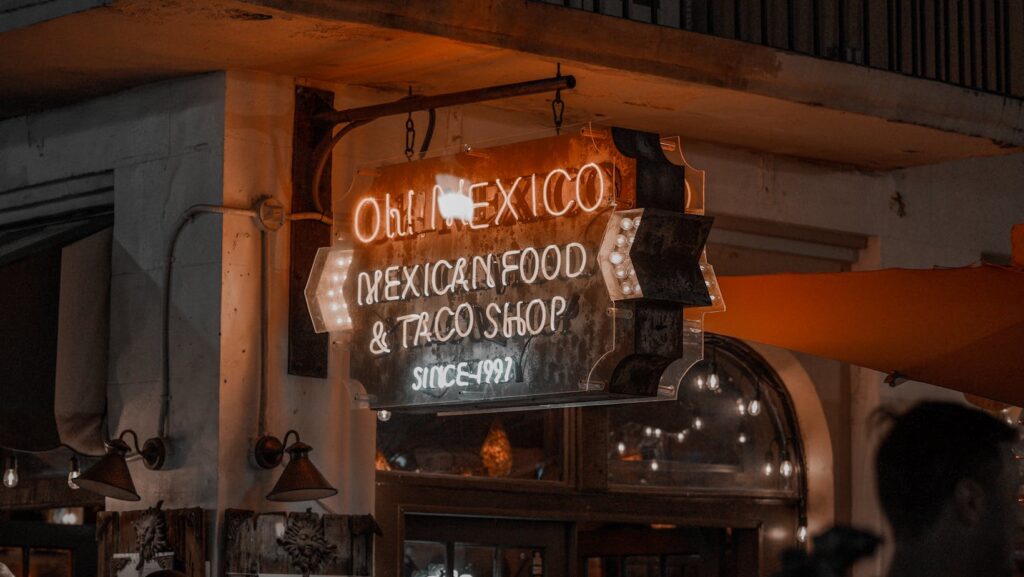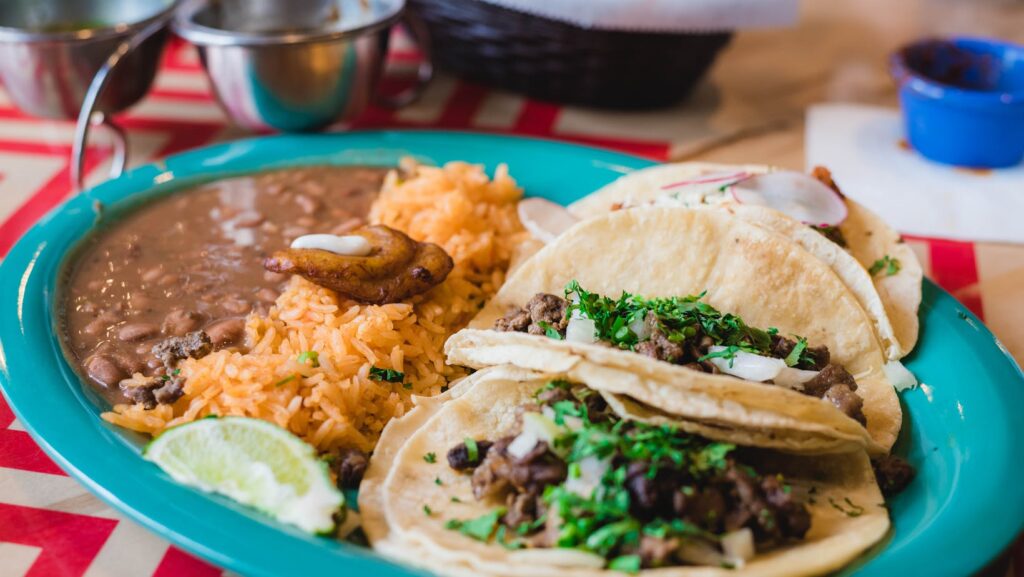Imagine biting into a crunchy taco, its shell crumbling into a burst of flavors, taking you on a culinary journey through time. Welcome to the rich tapestry of traditional Mexican cuisine, a vibrant blend of indigenous cultures, age-old cooking techniques, and a kaleidoscope of ingredients. This isn’t just about food, it’s a flavorful chronicle of Mexico’s history.

Traditional Mexican Food History
Spanning thousands of years, the evolution of Mexican cuisine traces an enthralling pathway. Evidence points to the cultivation of maize circa 7000 BC, establishing it as a primary food source. Known as the “gift of the gods,” maize showed versatility, morphing into innumerable forms. Tortillas, tamales, atoles – classic Mexican recipes all centered around this pivotal grain.
The Spanish invasion profoundly impacted Mexican cuisine, marking a pivotal transition. This period, dating from the 16th to the 19th century, introduced a blend of new ingredients. Pigs, cows, sheep, wheat, and a variety of fruits and spices appeared, infusing the existing gastronomic landscapes with a fresh zest. Suddenly, Mexican kitchens had cheese for quesadillas, lard for refried beans, and citrus fruits to create tangy salsas.
In the era that followed, Mexican food evolved to mirror Mexico’s dynamic socio-political landscape. Different regions began developing unique food traditions, paving the way for an eclectic culinary panorama. The mole, barbacoa, chiles in nogada – regional dishes emerged, showcasing Mexico’s gastronomic diversity.
The 20th century brought another transformation to Mexican food history. A resurgence of interest in traditional Mexican cuisine arose. Chefs started revisiting ancestral recipes, spotlighting the ancient ingredients, and cooking techniques. This neo-traditional wave turned global eyes towards Mexican gastronomy. Recognition followed, culminating in Mexican cuisine earning a spot in UNESCO’s Intangible Cultural Heritage list in 2010.

Key Ingredients in Traditional Mexican Cooking
Engaging with Mexican gastronomy’s rich tapestry goes beyond tasting its varied, robust flavors. It involves a deep dive into key ingredients that serve as the cornerstones of this centuries-old culinary tradition, molding its unique cultural identity.
Native Plants and Herbs
Mexican culinary artistry does not merely rely on the main staples. Indeed, the use of native plants and herbs adds an extra layer of depth to the country’s dishes. Nopal, a type of cactus, has become synonymous with Mexican culture, appearing in traditional recipes like salads, tacos, and stews. Notable herbs, such as epazote and hoja santa, offer distinctive aromas and tastes to dishes, enhancing their character.
There’s an array of vibrant chilies, integral to traditional Mexican flavors. From the smoky chipotle to the sweet and spicy ancho, chilies come in many shapes and sizes, each bringing a unique taste profile. It’s no surprise that Mexican cooking positions chilies not merely as additions, but as companions, enriching and amplifying the flavors of a dish.
The Role of Corn and Beans
Envisioning Mexican cuisine without corn and beans remains impossible. A testament to the cuisine’s history, these ingredients are the original gifts of Mexico’s fertile soils.
Corn, a gift from the ancient Mayan culture, tells a story of civilizational growth and dietary shifts. Taking many forms like tortillas, tamales, and pozole, it offers versatility and universality to Mexican cuisine.
Beans, a simile for nutrition and sustenance, are frequently paired with corn in classic recipes, providing a delicate balance of proteins and fibers. With varied types, such as black beans, pinto beans, and kidney beans, they lend textural variety and rich flavor profiles.
Through shining a light on the ingredients at the heart of Mexican cuisine, one begins to appreciate its layered complexity. Displaying a tapestry rich in native plants, herbs, corn, and beans, Mexican cooking reveals a cuisine steeped in cultural tradition and authenticity.
Now, as you step away from this culinary exploration, you carry with you a deeper appreciation for traditional Mexican food, a testament to the country’s rich history and its people’s resourcefulness and creativity.
